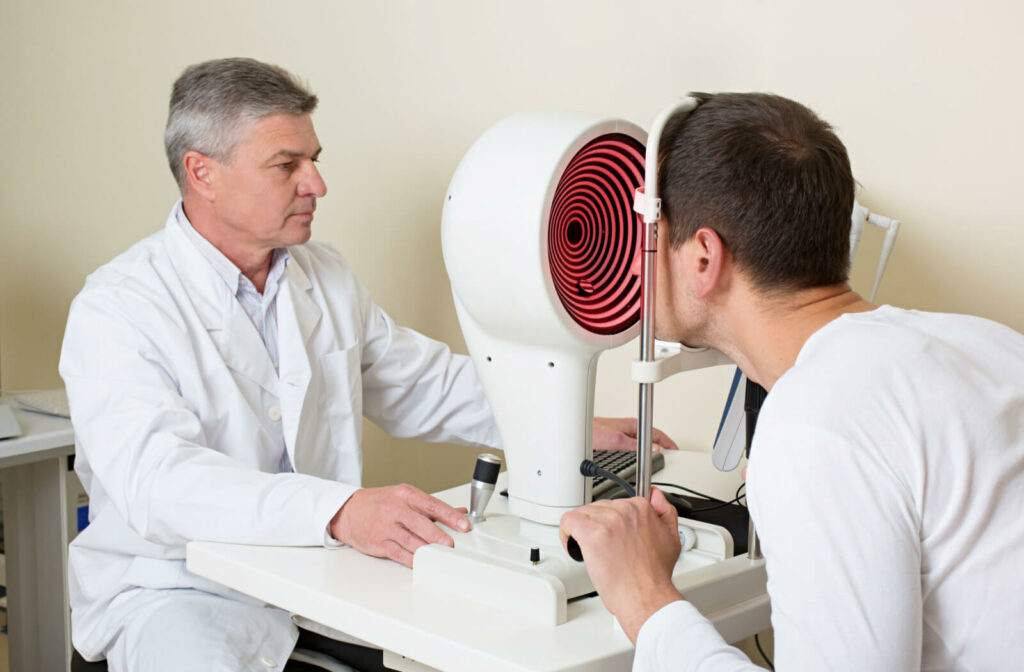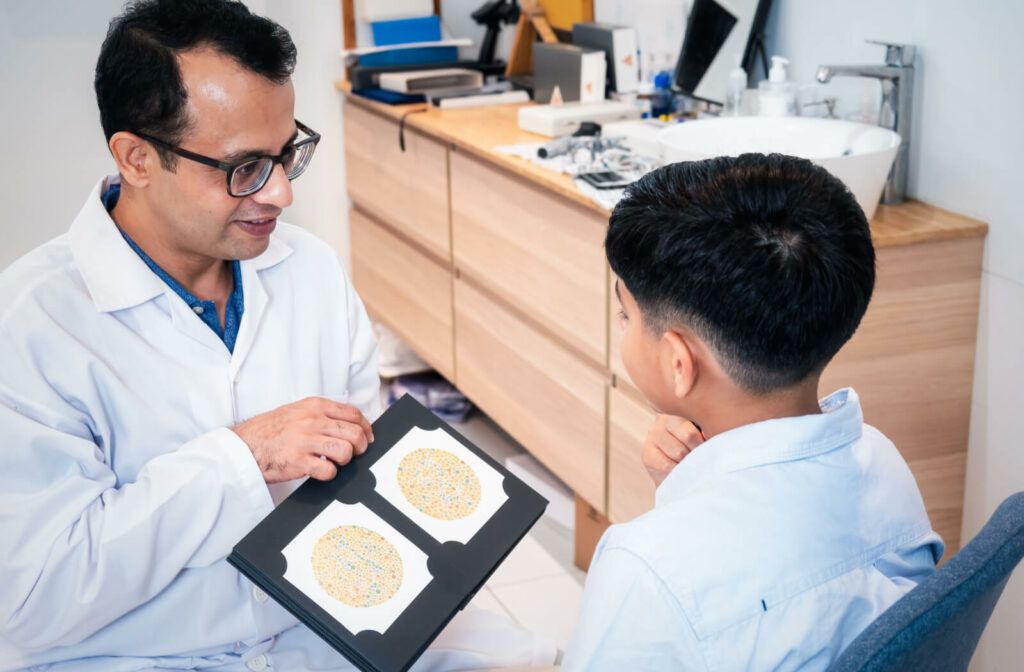Inheriting Your Vision
Our genetics can affect a lot about how we look. Sometimes the connections are obvious, like sharing your father’s nose or your mother’s eyes. Other inherited traits can go further back, like resembling a great-great aunt or having the same eye color as your grandfather. Your genetics can also impact how you see—including visual abilities and eye health.
So, what eye diseases and conditions are genetic? And how can eye care help you manage risk factors?
There are many eye conditions and traits that are genetic. Here are a few examples of common issues and how they can be managed or treated.
Refractive Errors
Refractive errors are vision problems caused by an irregular eye shape. Every part of the eye is crucial to focusing light and detecting vision. Therefore, even one tissue with an unusual shape can impact your visual quality or eye health. Although presbyopia is usually linked to natural aging, the other 3 refractive errors (myopia, astigmatism, and hyperopia) are significantly affected by genetics.
The most common refractive error is myopia (nearsightedness). When your eye is too long (lengthwise) or your cornea (clear front of the eye) too steeply curved, you can experience blurry distance vision. The elongated shape prevents light from reaching the retina (tissue at the back of the eye).
You’re more likely to have myopia if at least one of your parents is myopic. Spending long hours on visually intensive close-work tasks, like reading or computer work, can also increase your chances of developing myopia.
Astigmatism is when the eye has irregular curves rather than a smooth surface. There are 2 types of astigmatism: corneal astigmatism (irregular cornea) and lenticular astigmatism (irregular lens). Astigmatism can cause blurry vision near or far, depending on how the curves impact the way light is focused inside the eye.
Family studies have shown a higher risk of developing astigmatism if a child’s parents are astigmatic. Still, having a perfectly smooth or round eye shape is rare, so you can develop astigmatism without inheriting the condition.
Hyperopia (farsightedness) is when the eye is too short (lengthwise) or the cornea has too little curvature. Instead of focusing light accurately on the retina, the shorter distance causes light to reach further and focus behind the retina. As a result, hyperopia causes blurry close vision.
Children have a higher chance of developing hyperopia if one parent has hyperopia.
Prescription lenses can improve vision problems caused by myopia, astigmatism, hyperopia, and presbyopia. Refractive eye surgeries, such as LASIK, can also reshape the cornea to enhance visual acuity.

Keratoconus
Keratoconus affects the shape and quality of the cornea. The normally dome-shaped cornea becomes thin and bulges outward like a cone, preventing light from entering the eye. As a result, people with keratoconus can experience blurry near or far vision.
Keratoconus symptoms usually develop in the late teens or early 20s, progressing for 10–20 years before slowing progression.
In addition to blurry vision, people may experience the following:
- Corneal swelling, ulcers, or scarring
- Eye strain
- Halos around lights or light streaks
- Eye irritation or urge to rub your eyes
- Light sensitivity
- Poor night vision
Keratoconus can develop due to a combination of genetic and environmental risk factors. For example, repeated eye-rubbing and contact lens wear can lead to a thinning cornea. However, keratoconus does run in families, with 10% of patients sharing the condition with a parent.
There are multiple treatments available, depending on symptoms and eye health. For example, mild vision symptoms can be corrected with glasses or contact lenses (such as rigid gas-permeable or scleral lenses). Surgical options can help treat severe symptoms, such as corneal cross-linking or a corneal transplant.
Diabetic Eye Disease
Diabetes is a chronic condition related to how your body controls blood sugar. There are 2 types:
- Type 1 diabetes—the body stops making insulin, a hormone necessary for breaking down and using sugar.
- Type 2 diabetes—the body stops responding to insulin or cannot use insulin effectively to control blood sugar levels.
Both types of diabetes are affected by inherited and environmental factors. People with type 1 diabetes inherit risk factors from both parents. However, the genetic component does not cause the disease. Instead, it increases your risk of developing the condition.
Diabetes can cause various symptoms and health conditions, including eye health problems. The chances of developing vision problems increase the longer you have diabetes. The symptoms vary depending on the form of diabetic eye disease. Diabetic eye disease is a group of 4 eye conditions:
Symptoms can include:
- Blurry or wavy vision
- Dark areas or vision loss
- Flashes of light
- Floaters & spots
- Poor color vision
Diabetic eye exams are crucial for evaluating changes to eye tissue and vision. Therefore, people with diabetes should have yearly eye exams to help protect their vision.
Color Vision Deficiency
Color vision deficiency is a vision condition affecting how you perceive color, including the brightness and differences between shades. Complete color blindness (monochromacy) is extremely rare. Instead, the most common forms include:
- Red-green color blindness—difficulty seeing differences between red and green
- Blue-yellow color blindness—difficulty seeing differences between blue and green & between yellow and red
Color vision deficiency is an inherited vision condition passed from mother to son. However, eye injuries or diseases affecting the retina or optic nerve can also reduce color vision.
Many people with color vision deficiencies adapt to how they see the world. For example, traffic lights use green and red. Someone with mild red-green color blindness may not be able to tell the differences between the red and green shades, but they can learn the positioning of the lights.
Color blindness glasses can help enhance color perception by providing more contrast between light wavelengths. However, the enhancement may be limited and works only while worn.
Preserving Your Vision
While there are many inherited vision conditions, there are also many ways patients can protect their vision and eye health. Regular eye exams are crucial for detecting eye conditions, even before you notice vision symptoms. Your optometrist can also offer personalized care to help you manage or treat vision problems.
At Charles Korth Optometry, your vision is our focus. Visit us today for an eye care appointment.




